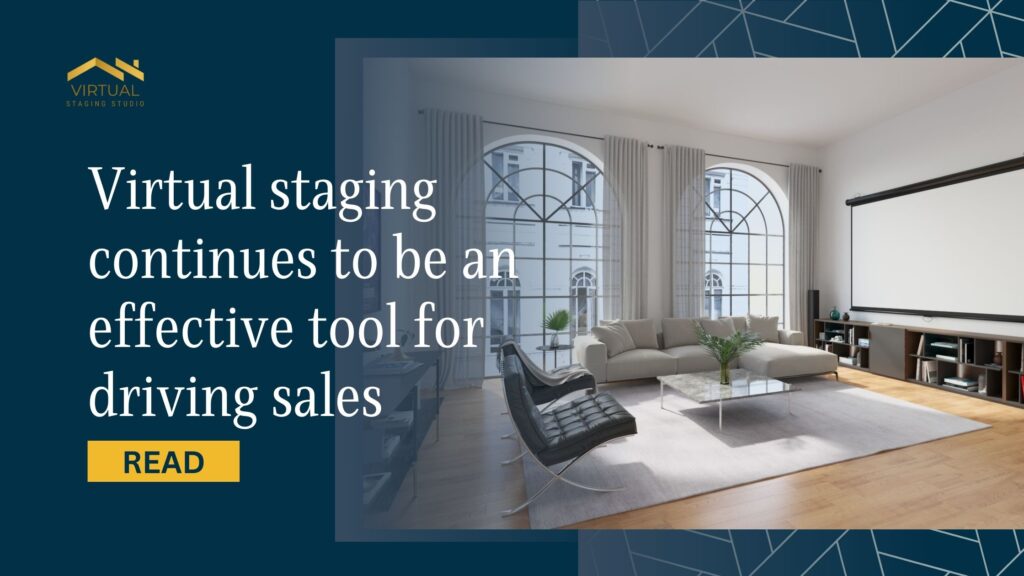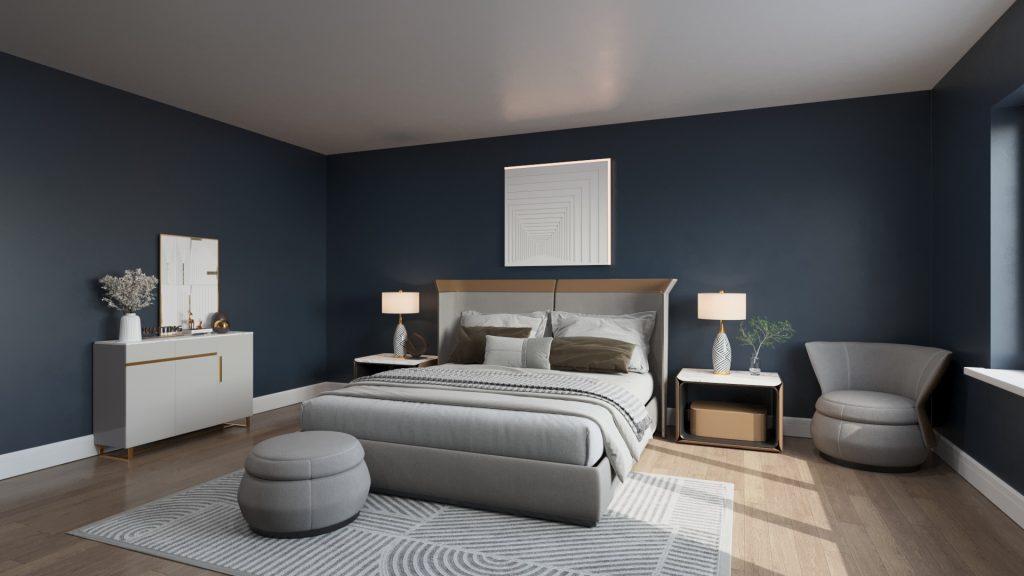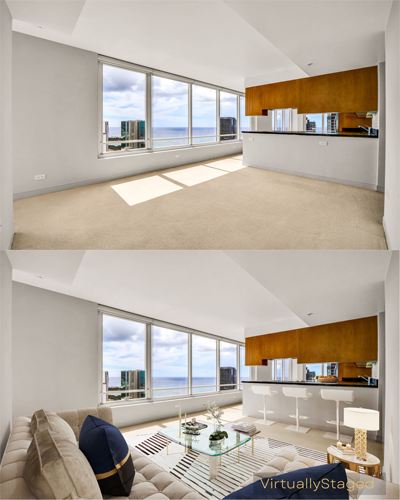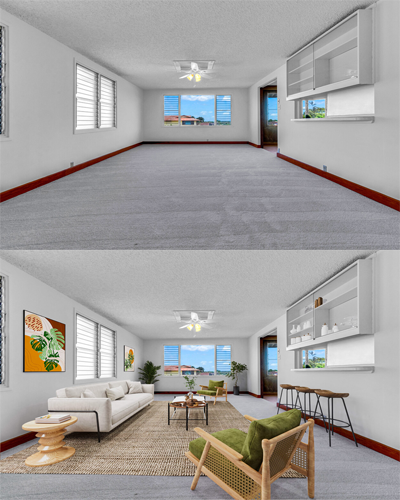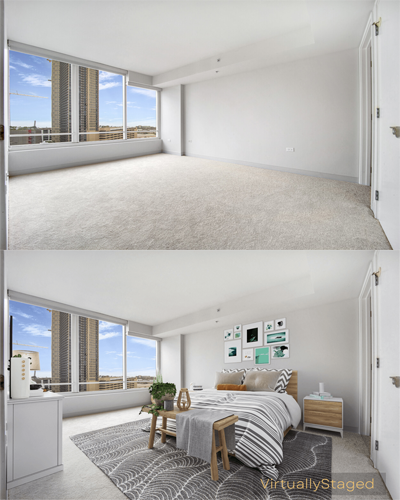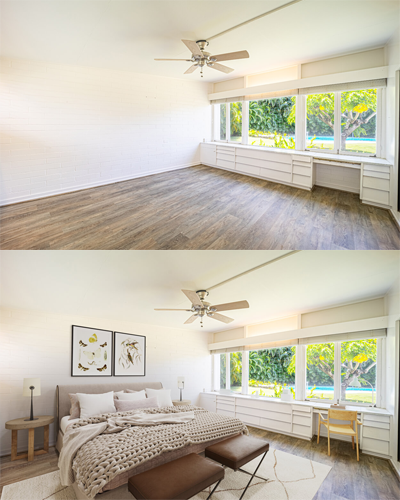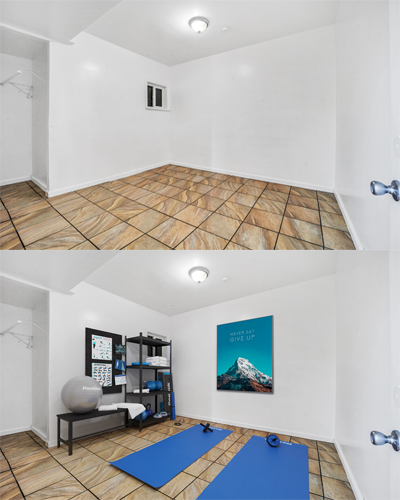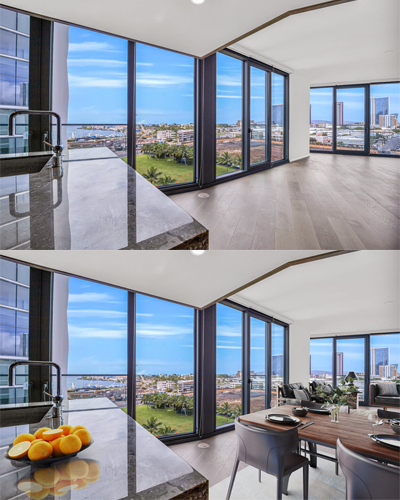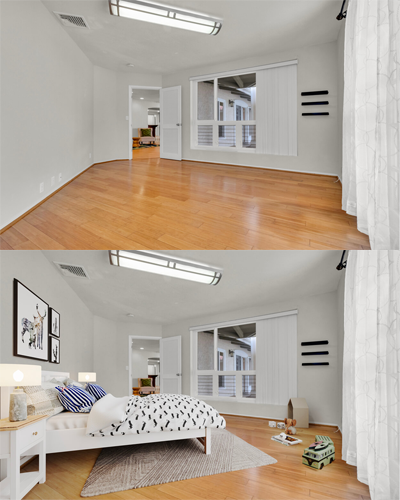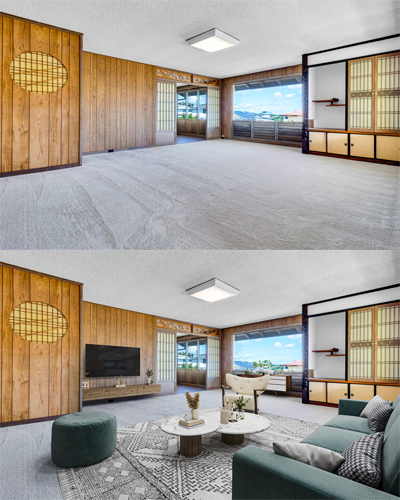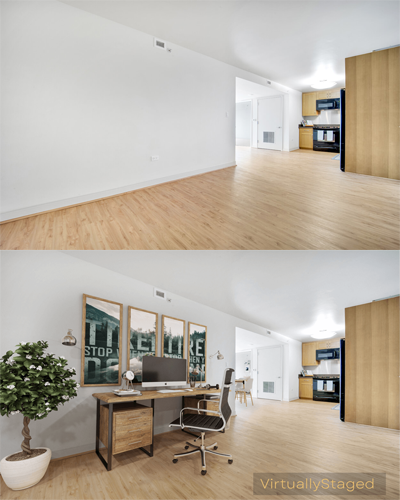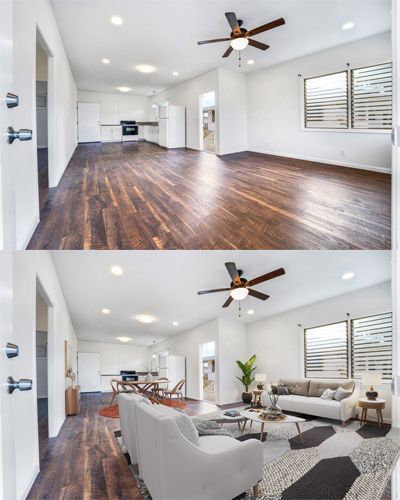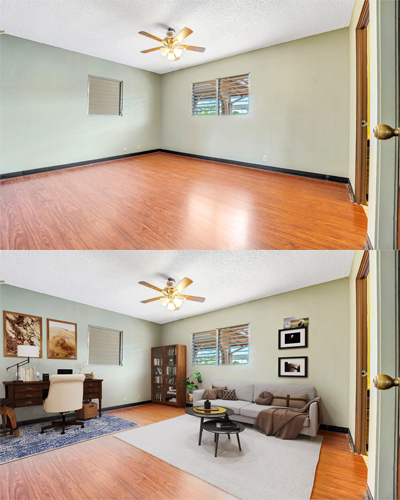The virtual staging was accelerated by the pandemic and continues to gain popularity even after the return to normalcy. This technology, which allows homes to be presented digitally, has become a valuable tool for developers in selling larger-scale properties and attracting potential buyers.
According to a study by the Association of Realtors Research Group, 81% of buyers’ agents believe that staging helps buyers visualize the space as their future home. The study also found that photos and videos play a crucial role in the home-buying process, with 77% of buyer agents considering photos as important and 74% considering videos is important. In addition, virtual staging has proven to be a cost-effective solution, with a 97% reduction in staging costs compared to traditional methods, as reported in a 2019 study.
Why Virtual Staging?
Virtual staging provides a cost-effective and time-saving solution for showcasing the interior appeal of a property to potential buyers, especially those who initiate their search online. It allows them to visualize the home through photographs and get a sense of its potential. One of the advantages is the swift turnaround time, with virtual staging companies able to deliver their product within 24 hours or even faster. Additionally, virtual staging offers significant cost savings compared to traditional staging methods. Experts suggest that both virtual and actual staging can produce similar positive outcomes for selling a property.
Here is some evidence that Jeffrey Steele, Forbs contributor added. The virtual staging of Penthouses A and B at 250 East 21st Street in Lower Manhattan’s Gramercy area is truly impressive. These penthouses, priced at $5.99 million and $6.5 million, respectively, are the standout features of the 13-story, 54-unit property. Spotless Agency, a renowned staging company, has virtually staged these three-bedroom penthouses, attracting numerous inquiries since the images were released.
When selling residences at 250 East 21st Street, Jeffrey advised the developers to use virtual staging for some of the remaining homes. This decision saved time and money while achieving the same results as traditional staging. The effectiveness of this strategy is evident through the quick sales of several residences and the continued interest generated from in-person visits. Moving forward, Jeffrey will continue to market homes virtually and fully furnished, as both methods have proven to deliver successful outcomes.
The Trends in the Real Estate Industry
Virtual staging is becoming increasingly popular in the real estate industry, offering a creative solution to showcase properties to prospective buyers. In Manhattan New York, for example, a unit at The Astor condominiums was virtually staged, allowing potential buyers to visualize the design of the space, even if they couldn’t visit in person. According to Katherine Gauthier of Douglas Elliman, virtual staging helps transform empty spaces into real homes and inspires buyers’ imaginations. Another example is 200 East 59th Street, where virtual staging is used to showcase different units, including a stunning penthouse with various layout options. Ultimately, virtual staging acts as a crucial tool in bridging the gap between a listing’s potential and buyers envisioning their future home.
Source: Steele J., Virtual Staging Continues To Drive Sales, Forbs, October 21, 2023
You may also want to read:
“Hire A Virtual Stager“
“360° Virtual Staging“
“The Benefits of Virtual Staging for Property Listings on Zillow“

